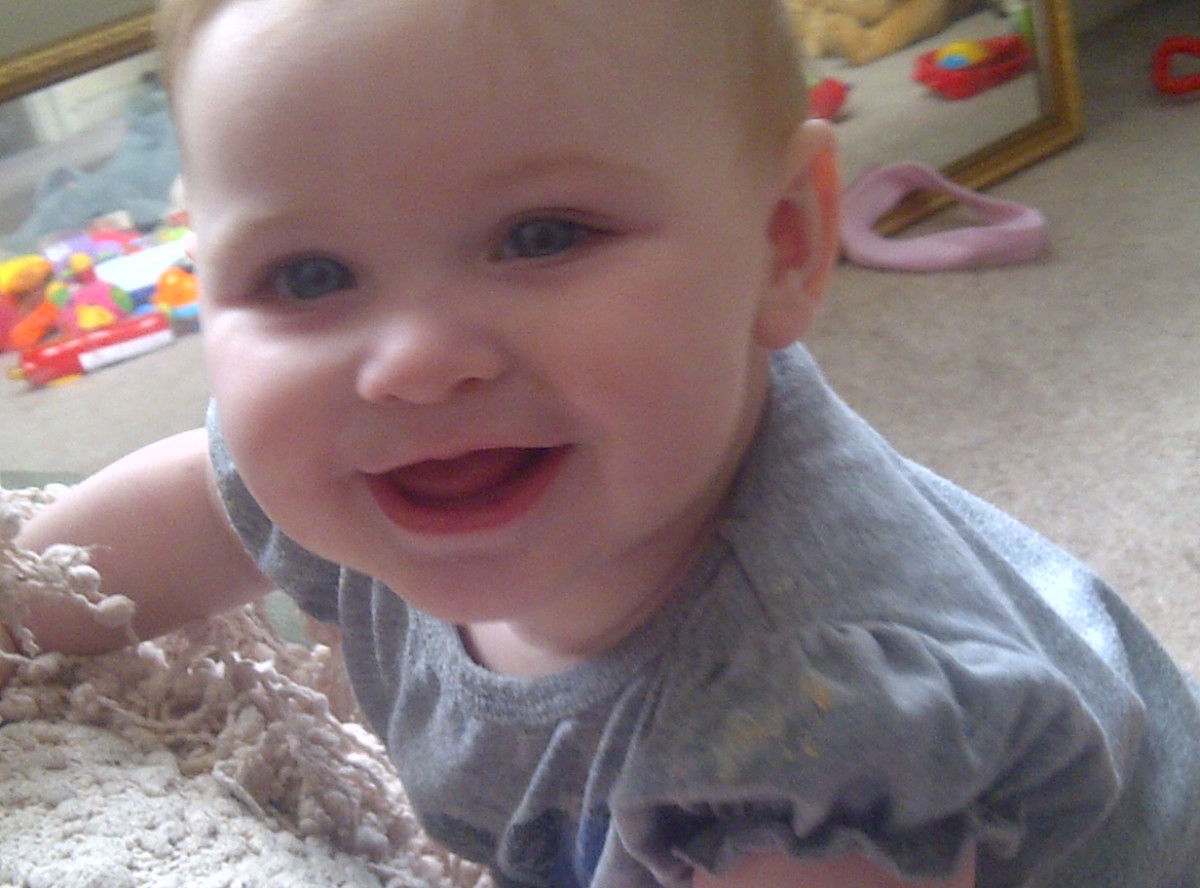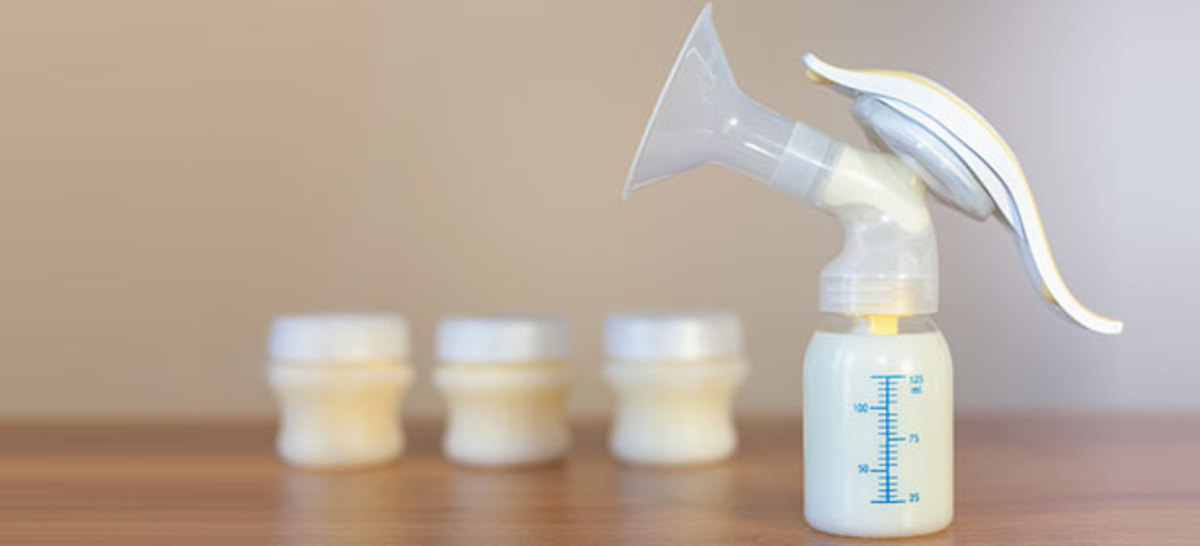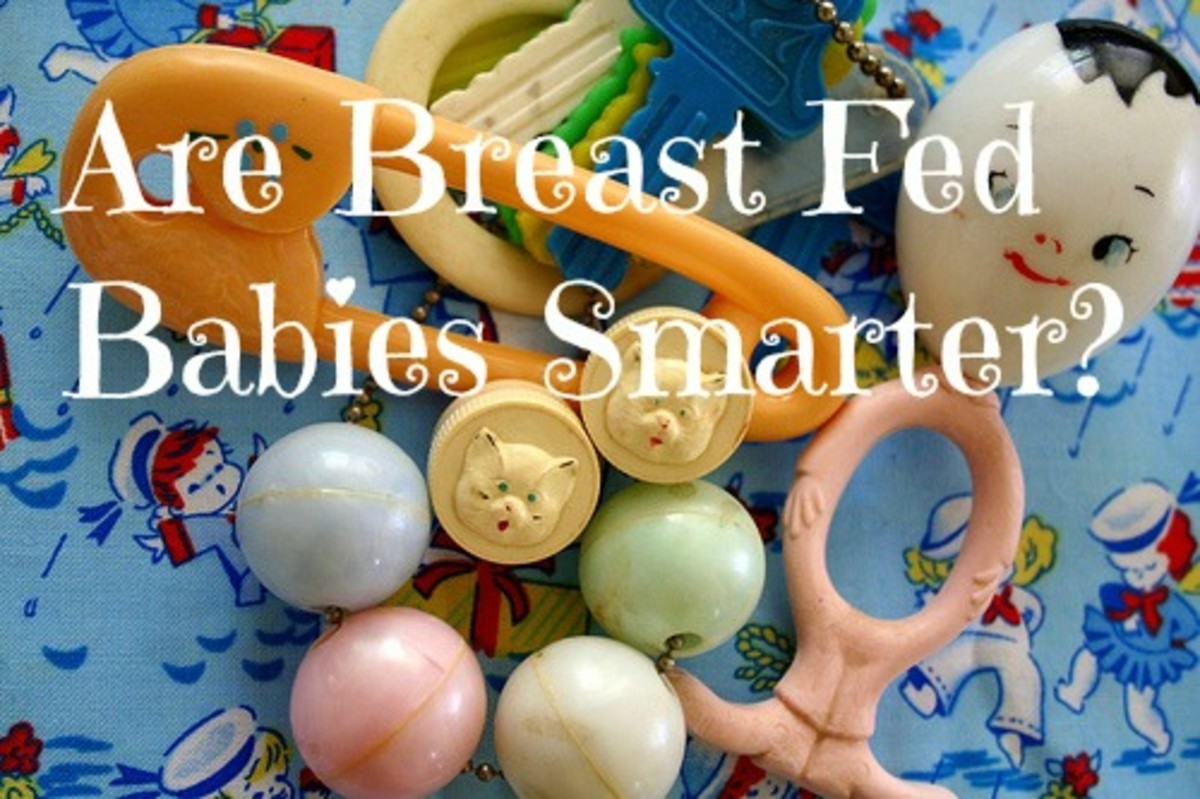How to breastfeed a baby
Breastfeeding is the feeding of an infant or young child with breast milk directly from human breasts. Breastfeeding a baby saves time and money. You do not have to purchase, measure, and mix formula, and there are no bottles to warm in the middle of the night. Breastfeeding also helps a mother bond with her baby. Physical contact is important to newborns and can help them feel more secure, warm and comforted. Nursing uses up extra calories, making it easier to lose the pounds gained from pregnancy. It also helps the uterus to get back to its original size more quickly and lessens any bleeding a woman may have after giving birth. Breastfeeding a baby also may lower the risk of breast and ovarian cancers.
Breast milk provides the right amount of fat, sugar, water, and protein that is needed for a baby's growth and development. Most babies find it easier to digest breast milk than they do formula. Breast milk carries antibodies to your baby to protect infants from bacteria and viruses and to help them fight off infection and disease. Human milk straight from the breast is always sterile. It is good to breastfeed your baby within the first 30 minutes to 1 hour after delivery. Your baby may take a few licks or begin to suckle and then pause and rest. Remember that both you and your new baby have to learn how to breastfeed. So, some feedings will go better than others.

How to breastfeed a baby
Breastfeeding positions:
1. Always wash your hands before breastfeeding.
2. Choose a breastfeeding position: You can try your baby on your lap (cradle hold), baby at your side (football hold) or lying on your side (reclining position). It is best to use boppy pillow or just pillows to support your back and arms as necessary. There are four basic positions for breastfeeding a baby.
Cradle hold
The Cradle Hold is the position which most mothers will use. To start with, position your baby across your stomach, with her face and knees facing your body for breastfeeding. Make certain that the baby's head is positioned in the bend of your elbow, with her mouth directly facing your nipple. The baby's body should be positioned in a straight line. For better comfort, you should tuck the baby's lower arm around your waist.
Cross cradle hold position
The Cross Cradle Hold position is relatively similar to the Cradle Hold, but you will be holding your baby in the arm opposite the breast from which your baby will latch onto. Ensure that the baby is positioned at the level of your breast with her mouth facing your nipple during breastfeeding.This is the ideal position if you are encountering problems latching on, or if your baby is small in size. This position enables more control of your baby's head.
Football hold
The Football Hold is similar to the cross-cradle hold, but the baby is not resting on the abdomen. Your baby is tucked under your arm and lying along the side you will be feeding on for this position.
Remember to place a pillow beside you. Your baby shall be positioned on top of the pillow with your arm being the support. The back of the baby's head will be in the palm of your hand and his/her back will be supported by your inner forearm. This position is ideal for mothers who have c-sections, because it prevents baby's weight from resting on the mother's abdomen.
Lying down
To begin with, place a few pillows behind your back for support and comfort. Next, position your baby's tummy in line with yours. Adjust to the point where your baby's mouth is directly facing your nipple. To avoid the baby from rolling backwards, do place a support behind your baby's back before breastfeeding.
3. Hold your baby very close, with his head, shoulders and hips facing you. While his mouth is close to your breast, tickle his mouth with your nipple. When he opens his mouth, bring him in the rest of the way. If he is latched on correctly, his lips will be flared out and he will take a good portion of your areola into his mouth.
4. You may expect to feel a pulling of the nipple, or even some pain initially. If pain lasts beyond a few seconds, the baby is probably sucking on just the tip of the nipple; remove him from the breast and try latching him on again.
5. Let your baby nurse on the first breast as long as he wants, to ensure that he gets enough to eat and that your milk supply will keep pace with his needs.
6. To remove your baby from the breast, insert a clean finger into his mouth to release the suction, and then pull him off.
7. Burping an important part of feeding: Your baby may swallow a little air during feedings. Burping her helps get rid of this air. And relieve uncomfortable pressure on her tummy. There are several ways to burp your baby.
Over the shoulder: Hold your baby upright, with her head on your shoulder and her chest against yours. With one arm supporting your baby's bottom, pat her gently on the back with your other hand, or rub her back upward.
Across your lap: Lay your baby down across your lap. Support her head with one hand, and rub or pat her back gently with your other hand.
Sitting up Hold: Your baby in a sitting position on your lap. Support her head and back with one hand and her chin and chest with the other. Pat her back gently.
But don't worry if yourbaby doesn't burp after a breastfeeding. She may not need to. Or she may burp a little later.
8. Nurse at least 10 to 12 times a day, or whenever your baby seems hungry. Signs of hunger include increased alertness or activity, mouthing and rooting. Crying is a late indicator of hunger.
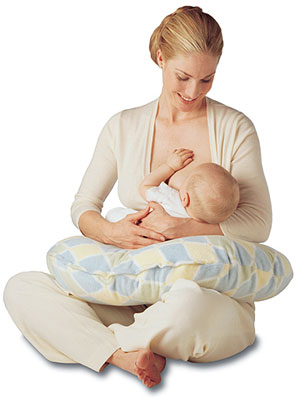
Breastfeeding basics
Every baby is unique and different. You should watch how your baby nurses. You should hear active swallowing throughout most of the breastfeeding; especially once your milk comes in. Yourbaby should actively suck and swallow for at least 10-15 minutes on one breast. For some babies this will be enough, others will want to nurse from the second breast. You will get to know your baby's patterns and needs. Here is a guide on how to breastfeed your baby.
1.Baby should breastfeed about 6 times every 24 hours for the first 1-3 days of life.
2. By the time your baby is 4 days old:
- Your baby should breastfeed 8-12 times every 24 hours.
- Actively sucking for about 10 minutes with visible movements (Watch near the baby's ear, you should see a wiggle type movement).
- You hear swallowing with every suck or every other suck throughout the feeding
- Your baby's bowel movement should change from black to brown/green to seedy yellow.
- Your baby has 2-3 seedy yellow bowel movements every 24 hours.
- Your babyhas 4-6 wet diapers per day.
- Your breasts feel full prior to a breastfeed and softer after a breastfeeding.
By the time your baby is 2 weeks old, he/she should have regained birthweight and continue gaining at a rate of 1/2 oz. to 1 oz. per day.
How do u know your baby is not getting enough milk to eat?
- Sleepy baby who only sucks for a few minutes at a time.
- Little or no swallowing heard during a feeding.
- Baby feeding fewer than 8 times in 24 hours.
- Mother experiences no breast fullness by day 5.
- Baby still has black or dark brown stools on day 5.
- Mother has extremely sore nipples and breastfeedingis painful.
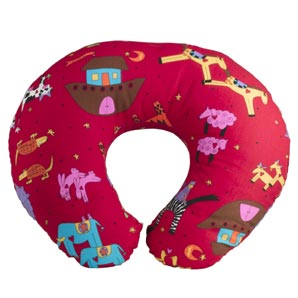
Common breastfeeding problems/concerns
Breastfeeding is good for your baby and your family. However, some women may experience initial difficulties and most women have lots of questions. If you are having a problem with breastfeeding, call your health care provider. Most problems get better in a week or two as you and your baby adjust to each other. Here is a guide to some of the common breastfeeding concerns.
1. Nipple soreness: Some mild nipple soreness is not uncommon during the first week of breastfeeding/nursing. This is usually felt when the baby first latches on to the breast. If your nipple hurts during the entire feeding, or your are developing sores on your nipples, the baby may not be latched on properly. If this occurs, take your baby off and try these suggestions.
- Make sure the baby's mouth is far back on the areola, about 1 inch past the nipple.
- Start feeding on the least sore side first.
- When the baby is done feeding (active sucking and swallowing has stopped), remove baby from the breast. Don't let baby use as a pacifier.
If soreness continues longer than one week, or your nipples are cracked, bruised or bleeding, call your health care provider. Applying a pure lanolin cream can also be soothing to cracked or scabbed nipples. Never put anything on your nipples that must be wiped off prior to nursing/breastfeeding the baby.
2. Breast engorgement: Most women notice their breasts feel heavy and full during the first week. This is natural and happens to mothers who bottle feed as well. If your baby is nursing well, your breasts will feel more comfortable in a day or two. During this time, breastfeeding often - every 1 1/2 to 2 hours.
Sometimes severe engorgement can make it difficult for the baby to latch on. Try a warm washcloth on your breasts and express a little by hand to soften the areola before breastfeeding. If you are still uncomfortable after nursing, try an icepack on your breasts. Engorgement is time limited and will pass once your body adjusts to the baby's needs.
3. Breast infection: If you develop a sore breast, you may have a plugged duct or breast infection (mastitis). A plugged duct can become an infection. A breast infection has some of the same symptoms as a plugged duct plus a fever and flu like feelings. A plugged duct or mastitis can be caused by:
- Missing a breastfeeding
- A too tight bra
- Cracked nipples
- Baby is not feeding well
- Getting over-tired
Taking care of the breast infection problem
Breastfeeding/nursing often on the sore breast. Lightly massage the sore breast while nursing and apply warm, moist washcloths to the area. Call your health care provider if you develop a fever. You may need to take an antibiotic to treat the infection.
4. How to increase your milk supply?
The more your babynurses, the more milk you will make. The less your baby nurses, the less milk you will make. If you give your baby many bottles of formula, you will make less milk. To increase your milk supply, increase the number of times you nurse your baby throughout the day. Around 2 weeks, 6 weeks, and 3 months, your baby will probably experience a growth spurt and may suddenly need to nurse every hour for 1-2 days. This is your baby's way of telling your body to make more milk. Let your babybreastfeed often and you will have more milk in a day or two.
How to choose a breast pump
Breast pumps come in so many varieties it's hard to know what pump works to fit your lifestyle. Here are the basics of breast pumps to help you make the right decision.
Hospital grade pumps
These breast pumps are the ones that are favored by the woman who pump breast milk more than once or twice a week. They offer a lot of flexibility and breast milk storage options.
Battery powered pumps
These breast pumps tend to work a bit faster and use less muscle, however, they are also basically used for occasional pumping. Though they can also be equipped with an AC adapter.
Hand pumps
This type of pump is generally used for occasional pumping. They may take a bit more time to pump breast milk, but generally cost lesss.
Video that shows how to breastfeed a baby
Other baby related articles
- Infantico Baby Sling Recall
After 3 infant deaths, Infantino made baby slings were recalled. More than 1 million of these makes it a massive Infantico Baby Sling Recall... - Breastfeeding basics
- How to treat diarrhea in babies
- Baby vaccinations and immunization schedule




